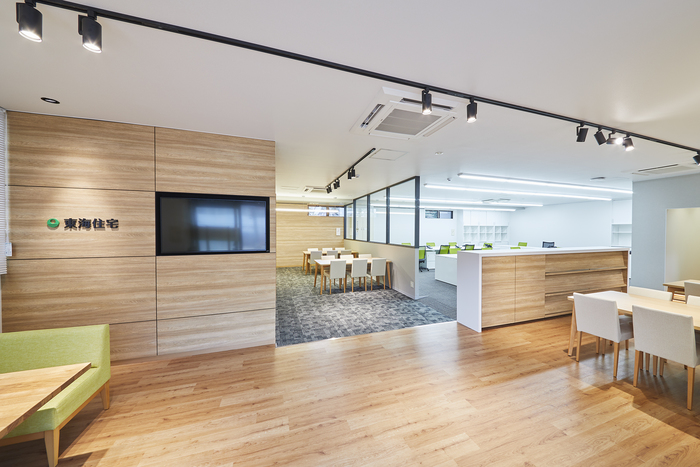
Pick a surface. Any surface.
Now, visualize that wall, or stairwell, or conference room, or hallway, covered in suede. Or wood grain. Or textured metal. Or sand.
You have now entered the world of 3M™ DI-NOC™ Architectural Finishes.
Drawing from countless inspirations in architecture, design, nature, and the elements, 3M™ DI-NOC™ Architectural Finishes are giving permission to decorators, interior designers, contractors, architects, landlords, and owners to create the look—or looks—they envision inside their building. And the results are just as varied as they are eye-catching.
Budget-friendly and faster to finish
As many architects and designers well know, sometimes a design finish cannot be achieved within a certain budget or time frame. It’s one thing to ensconce all the walls in velvet and inlay the floors with Italian marble. It’s quite another to source those materials and pay for them.
Let’s be clear: architectural finishes like 3M™ DI-NOC™ are not intended to be perfect substitutes for the real thing. Their brilliance lies in their close mimicry of the aesthetics of natural materials. And this close approximation to the actual look of stone, or wood grain, or leather, or stucco gets better and better with every new iteration of DI-NOC finishes.
Once you’ve honed in on the look you want to achieve on the interior of your building, another benefit of DI-NOC comes in its speed to the application. With proper planning and professional consultation, architectural finishes can be applied throughout rooms, halls, ceilings, elevators, and entire floors much more quickly than their natural counterparts. This time-saving also conserves resources and cuts costs.
A quick history of architectural finishes
The original purpose for the development of architectural finishes was for automobiles. The founding company that developed this product was formed in the 1930s and made high-quality, durable appliqués that gave metal automobile parts the aesthetic appeal of the old world. Soon, its films were replacing burl walnut instrument panels on luxury cars. A few years later, the films migrated to car exteriors. Among other applications, they replaced the wood panels on the long taxis at train and bus stations. These were called station wagons or, informally, “woodies.”
This use of the product for faux wood grain applications continued for the automotive industry into the 1960s before styles changed. During this time, Japan adopted the product for use in many applications beyond the automobile for several reasons: the country lacked natural wood resources, the lightweight of the material easily addressed earthquake design considerations, and the desire for surfacing refurbishment was high.
The manufacturing of this product was moved to Japan after the popularity of the woodies subsided in the U.S. Currently, all the major manufacturers producing this type of product are located in Japan. In the 1990s, the product was reintroduced into the U.S.
New aesthetic heights
Architectural finishes are used by designers and architects around the world as a decorative material. In the right hands, 3M™ DI-NOC™ has been used to elevate the aesthetic of luxury hotels, arenas, urban live/work environments, and entire highrises. And the fun really begins in the selection of the textures, designs, and looks you want for your space.
Metal. Wood. Stone. Sand. Gloss. Textile. Ceramic. Mortar. Carbon. The options for your finished look are countless, and that’s just for starters. Once you’ve decided on the material finish, you then get to choose from a variety of shades, textures, grains, patterns, and designs. The combinations are nearly limitless, only bound by your aesthetic imagination.
The use of architectural finishes gives you almost unlimited creative freedom in new construction, and they are easily converted and applied on-site for cost-effective refurbishment and repair options. Architectural finishes can be used in a wide array of projects on walls, fixtures, elevators, doors, and furniture, and are found in a multitude of structures from airports and hospitals to retail and cruise ships.
The nitty-gritty of architectural finishes
As the name implies, architectural finishes help “finish” a surface when applied to a substrate. Architectural finishes have a wide variety of attributes, from off-site or on-site application in a controlled environment to different types of finishes to flexibility of form.
Conformable finishes are quite pliable. They are usually delivered as sheet goods, typically in a roll, and are hand-applied. Flexible finishes, on the other hand, are capable of being bent or flexed but are susceptible to being influenced or changed. Plastic laminates are an example of a flexible finish.
Why DI-NOC?
Where do architectural finishes fit among the many other finish products today? While not intended to substitute for real materials in every situation, these finishes allow an architect or interior designer to achieve a design intent when budget and timing won’t allow for more expensive or scarcer materials, or to allow the useful life of existing finishes to be extended.
Architectural finishes like 3M™ DI-NOC™ offer designers and architects a versatile material to meet many design challenges while being both aesthetically pleasing and cost- and time-effective restoration or finish. These decorative materials can mimic the look of many natural materials, including wood and stone, at a fraction of the cost.
Does DI-NOC™ sound like the right solution for your project? Learn more about the DI-NOC installation process with NGS or contact a representative to get started on your custom quote.


